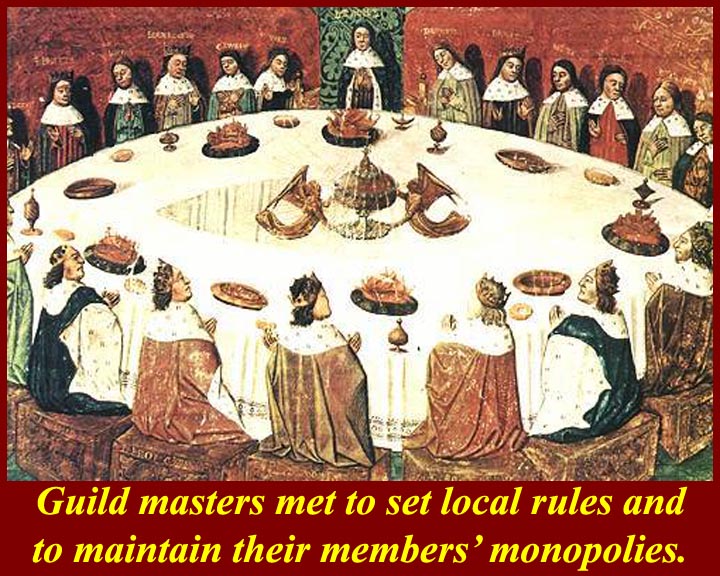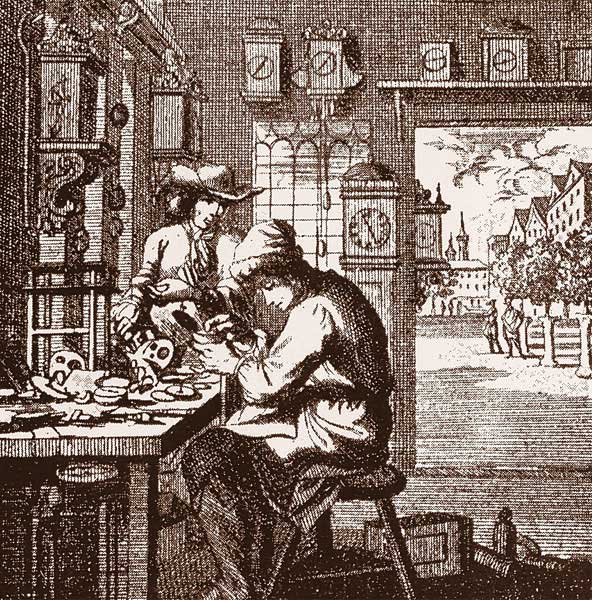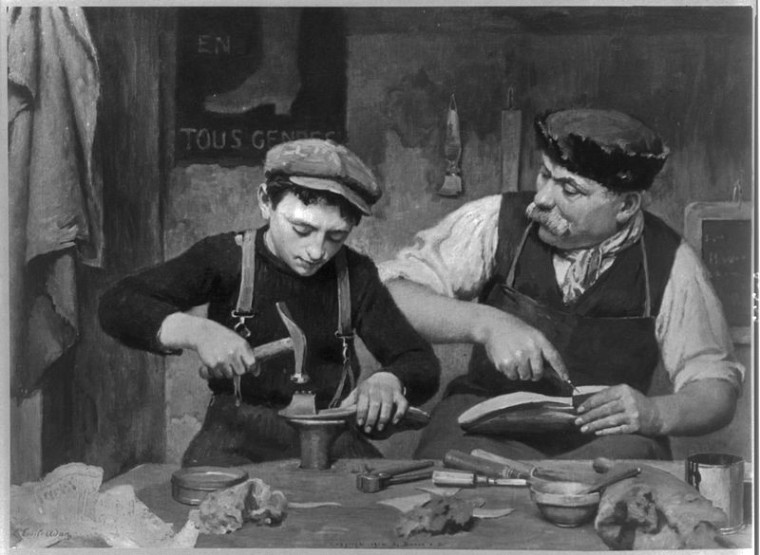The above photo is a medieval craft guild symbol. Guilds were created to protect the interest of the tradesman and to prevent outsider from entering into competition with them. Journeymen who worked for the master were not allowed to take tools home so they don’t earn a living on the side that would take away potential work from the master. I believe that these guilds which if memory serves me correct begun in the 10th century by none other than the king. Which king and which country I’m sorry I don’t have the answer to this question. I do suspect it’s main focus in the beginning was for tax purposes. No one could work without belonging to the appropriate guild for the associated trade. Much like today you can’t hide your taxes so the same principles were enforced then.
Here is a brief summary of the main functionality of the guild which I’m sure you will find quite interesting and sophisticated for it’s time. I can’t believe I just said that; modern policies are nothing more than an extension by continuity with minor refinements of ancient policies. Another words it’s a continuation of the same policies or ideas that begun in the 10th century. Read on and compare for yourselves.

Craft Guilds
The craft guilds came about by increased specialization of industry.
- A group of artisans engaged in the same occupation, e.g., bakers, cobblers, stone masons, carpenters, etc. would associate themselves together for protection and mutual aid.
- As these craft associations became more important than the older merchant guilds, their leaders began to demand a share in civic leadership.
- Soon no one within a town could practice a craft without belonging to the appropriate guild associations.
- The purpose of the guilds was to maintain a monopoly of a particular craft especially against outsiders. For example, the harness makers would get together and figure out what the owners of business needed from that trade then allow as many masters to set up shop as the business could support.

Consumer and Worker Protection
In protecting its own members, the guilds protected the consumer as well.
- Many craft regulations prevented poor workmanship. Each article had to be examined by a board of the guild and stamped as approved.
- Because of lack of artificial light, work at night was prohibited.
- In Florence the number of dyers was specified by the guild. In one place it was forbidden to see pigs fattened by a barber-surgeon lest the pig had been fattened on rich peoples’ blood.
- Metalware plating was tantamount to fraud and, therefore, was forbidden.
- To regulate competition between members the guild forbade advertising.
- All prices were regulated
- Craftsmen could take work outside where it could be seen.
- Price-cutting was strictly forbidden.
- To preserve its monopoly a guild forbade the sale of foreign artisans’ work within a city.
- The most important processes used in manufacturing were guarded. In Florence a worker who possessed any essential trade secrets and for some reason fled to a foreign territory must be tracked down and killed lest he divulge the information.
- Monopoly existed within individual guilds through the limitation of the number of masters.
- No member was ever allowed to corner the market by purchasing a large supply of a product or commodity so as to be able to fix the price.
Services Performed by Guilds
Guilds performed other services for their members as well. They
- provided funeral expenses for poorer members and aid to survivors;
- provided dowries for poor girls;
- covered members with a type of health insurance and provisions for care of the sick;
- built chapels;
- donated windows to local churches or cathedrals;
- frequently helped in the actual construction of the churches;
- watched over the morals of the members who indulged in gambling and usury; and
- were important for their contribution to emergence of Western lay education. In earlier times, the only schools in existence had been the monastic or cathedral schools.

Apprentice — usually a male teenager who went to live with a master and his family; his parents paid to have him taken on. He probably occupied the attic of their 3 story home:
- The shop where he would learn his trade was located on the ground floor.
- The second story was the masters’ living area.
- The third story housed the journeyman who was there to learn also.
The apprentice was subject to the master. During his apprenticeship he was not allowed to marry. This learning period might vary from 2-7 years depending on the craft. His training included the rudiments of the trade. The apprentice then progressed to journeyman.
Journeyman or day worker — entitled to earn a salary.
The next hurdle was to produce a masterpiece that would satisfy the master of the guild so that he could assume the title of master craftsmen and would thus get membership in the guild. This was not easy to accomplish because:
- The journeyman had to work on his own time to produce this masterpiece — Sunday was the only day he did not work sun-up to sun-down.
- He must use his own tools and raw materials which required a capital outlay that he might not have been able to accomplish as a wage earner.
- Then if he did produce the required work, the state of the economy guided the vote of acceptance — it was not desirable to have too many masters in a guild and when the economy was tight. The masters would not admit anyone to their ranks to strain the economy.
Master—Once the masterpiece was completed and the guild voted to accept the journeyman as a master, he could become one.


Hello,
Thank you for the great article about Guilds. I have been trying to find this information for several months. However, most sources do not provide enough information. Your article was very interesting to read. I have enjoyed your blog. Thank you.
Dave
LikeLiked by 1 person
Glad to have been of service and thank you
LikeLike
This was a good and interesting read Salko. While no system is perfect at least there was a system. A system within which to learn, progress and ultimately make a living. I wonder how it all fell apart?
Unions here in the U.S. have many of the attributes listed above, but struggle to keep their hold on the market. Some of those struggles originate within the unions and some are a result of outside issues. My guess is that the guilds succumbed to similar issues.
Thanks for the post.
LikeLike
I suspect that since the invention of capitalism and the introduction of the stock market the guild was abolished and monopolisation of the market became a more favoured approach by the wealthy over a more fairer system upheld by the guild. Ok chasing workman around the country and slaughtering them wasn’t ideal but the system was fair both to the consumer and the workman.. The problem with unions is that they only concentrate on the worker and most of them are corrupt anyway but the guild favoured both parties and made sure the interest of both parties ie tradesman and consumer were fair and just. Bottom line is their system worked and a new unfair system of capitalism was adopted and has proven to be a failure time and time again yet they still persist in continuing with it much like communism which is another failed ideology.
LikeLiked by 1 person